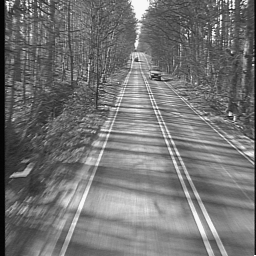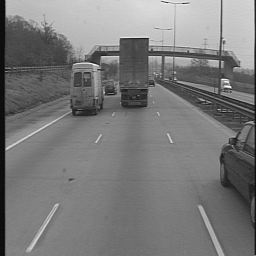


Next: Motion Estimation Up: Vehicle Tracking with Applications Previous: Abstract



Next:
Motion Estimation
Up:
Vehicle Tracking with Applications
Previous:
Abstract
In today's crowded traffic conditions the cost of an accident can be heavy both in human terms and in its effect on a road network working at or near to full capacity. Recent work in computer vision may privide new ways of reducing the number and severity of accidents, with large social and economic benefits. With the rapidly falling costs of cameras and computers it is now feasible to equip a car with an autonomous artificial vision system which can monitor nearby vehicles, keep track of their motions and warn the driver of impending collisions.
The model-based tracking system developed at Reading [ 11 , 12 ] can locate and reason about the positions of 3-D vehicles in a known 3-D world. Model-based algorithms are robust to variations in illumination and colour, and to changes in the position of the object relative to the camera. They deal properly with occlusions and make it possible to impose object-centered dynamic constraints. They can be easily adapted to deal with camera movement, and to the use of multiple cameras. The model gives the tracker a level of stability and accuracy that is impossible to achieve in purely bottom-up methods of tracking.
A key problem in model-based tracking is initialisation. The target vehicle or vehicles must be tracked soon after they appear in the image, but this can be difficult as the image of a far off target may only subtend a few pixels and it may lack prominent feature points. For example, in Figure 1(a) the top part of the nearer car merges in with the background, making it very hard to detect.


Figure 1:
Typical road scenes: (a) country road with far off target vehicle
approaching the camera (note the strong shadows), and (b) motorway scene
with vehicles ahead and overtaking.
The first part of this paper describes methods for estimating the camera motion and detecting anomalous local motions which may be due to far off targets. The camera motion is estimated using point matches, and the local motions are estimated using optical flow. In the second and final part of this paper, 3-D model-based techniques are employed to infer 3-D trajectories of vehicles from an image sequence. Applications to a proposed collision alert system (see Figure2 ) are discussed.
Figure 2:
The proposed collision alert system.
Machine vision has huge potential for the detection and identification of road traffic vehicles, and for monitoring their positions and interactions over time. To date, traffic vision systems have largely assumed static cameras [ 11 , 12 ]. In contrast, this work addresses the case of a camera mounted on a moving vehicle. Existing methods for motion estimation and tracking typically employ optical flow computation or other techniques (e.g. [ 2 , 5 ]). These approaches are adequate for tasks such as the estimation of time to collision or object detection but in the absence of a model they are not accurate enough to generate an understanding of the 3-D form and position of vehicles. To our knowledge this is the first time that a 3-D model-based vision system has been employed for monitoring road traffic with potential applications to raising collision alerts from a car-mounted camera.



Next:
Motion Estimation
Up:
Vehicle Tracking with Applications
Previous:
Abstract